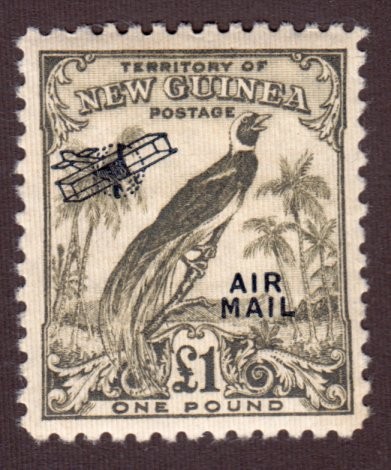
Discussion - Member to Member Sales - Research Center

Discussion - Member to Member Sales - Research Center

On 14 April 1912, Amerika transmitted a wireless message about icebergs near the same area where RMS Titanic struck one and sank less than three hours later.
Linus



4 Members
like this post.
Login to Like.
That's a beautiful card Linus! 
Thanks for sharing this.
I love the connection with the Titanic.

Login to Like
this post
'
Great card, great cancel!
Cheers,
/s/ ikeyPikey

Login to Like
this post
Thank you for the kind words. This postcard, just signed “Albert” on the front, always seemed different to me. No personal greeting, or message of love, well-being, or “be home soon,” etc. Who the heck was Albert? I did some research, and I think I found the answer: (Source – Wikipedia)
Albert Ballin was the inventor of the concept of the cruise ship. His father was part owner of an imigration agency that arranged passages to the United States, and when he died in 1874, young Albert took over the business. He developed it into an independent shipping line, saving costs by carrying cargo on the return trip from the US. This brought him to the attention of the Hamburg-America Line, which hired him in 1886, and made him general director in 1899.
Although extremely successful in developing the business, as a Jew, and only being the director, but not the owner of the company, he was not accepted by all of Hamburg society. Nevertheless, he was respected and admired by Kaiser Wilhelm II and was designated as being "hoffähig" (welcomed and acceptable at court) an honor given to only a few by Wilhelm. Ballin's home in Hamburg, which currently houses the UNESCO Institute for Lifelong Learning, has a suite of rooms that were built specifically for the Kaiser, to be used when he visited Hamburg. Many different ship companies began to include ocean liners among their fleets, to add luxury and comfort to sea travel. Due to bad weather conditions in the winter months the transatlantic ocean liners could not operate at full capacity, and Ballin thought of a scheme to increase the occupancy by offering idle ships to travel agencies in Europe and America in the winter.
The first modern cruise, which defined the journey not just as transport but as the actual reward, commenced on 22 January 1891, when the SS Auguste Victoria (named after the German empress) set sail to cruise the Mediterranean for six weeks. The competitors initially sniggered at Ballin, who organized and supervised the voyage personally, but the project was a huge success. In order to accommodate the growing demand, another three of the SS Auguste Victoria's sister ships operated as cruise liners, and in 1899, the Hamburg-America Line commissioned Blohm & Voss to construct the first purpose-built cruise ship, the Prinzessin Victoria Luise. It was the very first cruise ship, one exclusively tailored for the needs of well-to-do passengers.
Ballin further expanded the fleet in 1900 when he acquired fourteen steamships from A. C. de Freitas & Co. In 1901, Ballin built the Imigration Halls (now the Museum "BallinStadt") on the Hamburg island of Veddel to accommodate the many thousands of people from all over Europe who arrived at the Port of Hamburg every week to imigrate to North and South America on his company's ships.
Ballin frequently traveled on the ships in his fleet and often spoke to passengers traveling with him to find out about the ships in his fleet and what improvements to make to future Hamburg Amerika ships. Ballin would take these improvements in hand and make sure that they would be placed on both his current and future liners.
Ballin acted as mediator between the United Kingdom and the German Empire in the tense years prior to the outbreak of World War I. Terrified that he would lose his ships in the event of naval hostilities, Ballin attempted to broker a deal whereby the United Kingdom and Germany would continue to race one another in passenger liners but desist in their attempts to best one another's naval fleets. Consequently, the outbreak of war deeply disillusioned him. Many of the Hamburg-America Line's ships were lost or suffered considerable damage during the hostilities.
Completely distraught upon hearing the news of the abdication of his benefactor and protector, Kaiser Wilhelm II, Ballin committed suicide by taking an overdose of sleeping pills two days before the armistice ended World War I. Ballin's fears were soon to be realized as the company's flagships, the SS Imperator, SS Vaterland and SS Bismarck were ceded as war prizes to Great Britain and the United States. (Source – Wikipedia)
I think this postcard was signed by Albert Ballin and mailed for passenger Charles Smrha of Milligan, Nebraska as a souvenir. This also explains the excellent, neat cancellation by the ship’s postal clerk, as any worker would do, when the head boss was present.
Linus

4 Members
like this post.
Login to Like.
Albert Ballin is pictured on the Germany stamp below, which many of you have in your stamp collection.
Linus


Login to Like
this post

Tonight I will share a postcard from my collection postmarked onboard the German ship "Amerika" in 1909 addressed to Milligan, Nebraska, USA. The postal clerk on this ship applied a nice cancellation, and here we are enjoying it 110 years later.
On 14 April 1912, Amerika transmitted a wireless message about icebergs near the same area where RMS Titanic struck one and sank less than three hours later.
Linus



4 Members
like this post.
Login to Like.

re: Germany Picture Postcard From 1909
That's a beautiful card Linus! 
Thanks for sharing this.
I love the connection with the Titanic.

Login to Like
this post

re: Germany Picture Postcard From 1909
'
Great card, great cancel!
Cheers,
/s/ ikeyPikey

Login to Like
this post

re: Germany Picture Postcard From 1909
Thank you for the kind words. This postcard, just signed “Albert” on the front, always seemed different to me. No personal greeting, or message of love, well-being, or “be home soon,” etc. Who the heck was Albert? I did some research, and I think I found the answer: (Source – Wikipedia)
Albert Ballin was the inventor of the concept of the cruise ship. His father was part owner of an imigration agency that arranged passages to the United States, and when he died in 1874, young Albert took over the business. He developed it into an independent shipping line, saving costs by carrying cargo on the return trip from the US. This brought him to the attention of the Hamburg-America Line, which hired him in 1886, and made him general director in 1899.
Although extremely successful in developing the business, as a Jew, and only being the director, but not the owner of the company, he was not accepted by all of Hamburg society. Nevertheless, he was respected and admired by Kaiser Wilhelm II and was designated as being "hoffähig" (welcomed and acceptable at court) an honor given to only a few by Wilhelm. Ballin's home in Hamburg, which currently houses the UNESCO Institute for Lifelong Learning, has a suite of rooms that were built specifically for the Kaiser, to be used when he visited Hamburg. Many different ship companies began to include ocean liners among their fleets, to add luxury and comfort to sea travel. Due to bad weather conditions in the winter months the transatlantic ocean liners could not operate at full capacity, and Ballin thought of a scheme to increase the occupancy by offering idle ships to travel agencies in Europe and America in the winter.
The first modern cruise, which defined the journey not just as transport but as the actual reward, commenced on 22 January 1891, when the SS Auguste Victoria (named after the German empress) set sail to cruise the Mediterranean for six weeks. The competitors initially sniggered at Ballin, who organized and supervised the voyage personally, but the project was a huge success. In order to accommodate the growing demand, another three of the SS Auguste Victoria's sister ships operated as cruise liners, and in 1899, the Hamburg-America Line commissioned Blohm & Voss to construct the first purpose-built cruise ship, the Prinzessin Victoria Luise. It was the very first cruise ship, one exclusively tailored for the needs of well-to-do passengers.
Ballin further expanded the fleet in 1900 when he acquired fourteen steamships from A. C. de Freitas & Co. In 1901, Ballin built the Imigration Halls (now the Museum "BallinStadt") on the Hamburg island of Veddel to accommodate the many thousands of people from all over Europe who arrived at the Port of Hamburg every week to imigrate to North and South America on his company's ships.
Ballin frequently traveled on the ships in his fleet and often spoke to passengers traveling with him to find out about the ships in his fleet and what improvements to make to future Hamburg Amerika ships. Ballin would take these improvements in hand and make sure that they would be placed on both his current and future liners.
Ballin acted as mediator between the United Kingdom and the German Empire in the tense years prior to the outbreak of World War I. Terrified that he would lose his ships in the event of naval hostilities, Ballin attempted to broker a deal whereby the United Kingdom and Germany would continue to race one another in passenger liners but desist in their attempts to best one another's naval fleets. Consequently, the outbreak of war deeply disillusioned him. Many of the Hamburg-America Line's ships were lost or suffered considerable damage during the hostilities.
Completely distraught upon hearing the news of the abdication of his benefactor and protector, Kaiser Wilhelm II, Ballin committed suicide by taking an overdose of sleeping pills two days before the armistice ended World War I. Ballin's fears were soon to be realized as the company's flagships, the SS Imperator, SS Vaterland and SS Bismarck were ceded as war prizes to Great Britain and the United States. (Source – Wikipedia)
I think this postcard was signed by Albert Ballin and mailed for passenger Charles Smrha of Milligan, Nebraska as a souvenir. This also explains the excellent, neat cancellation by the ship’s postal clerk, as any worker would do, when the head boss was present.
Linus

4 Members
like this post.
Login to Like.

re: Germany Picture Postcard From 1909
Albert Ballin is pictured on the Germany stamp below, which many of you have in your stamp collection.
Linus


Login to Like
this post

